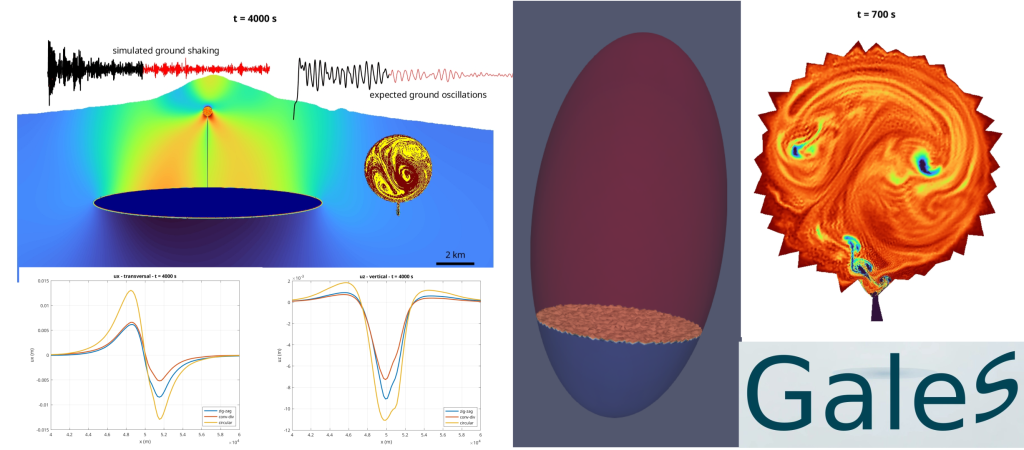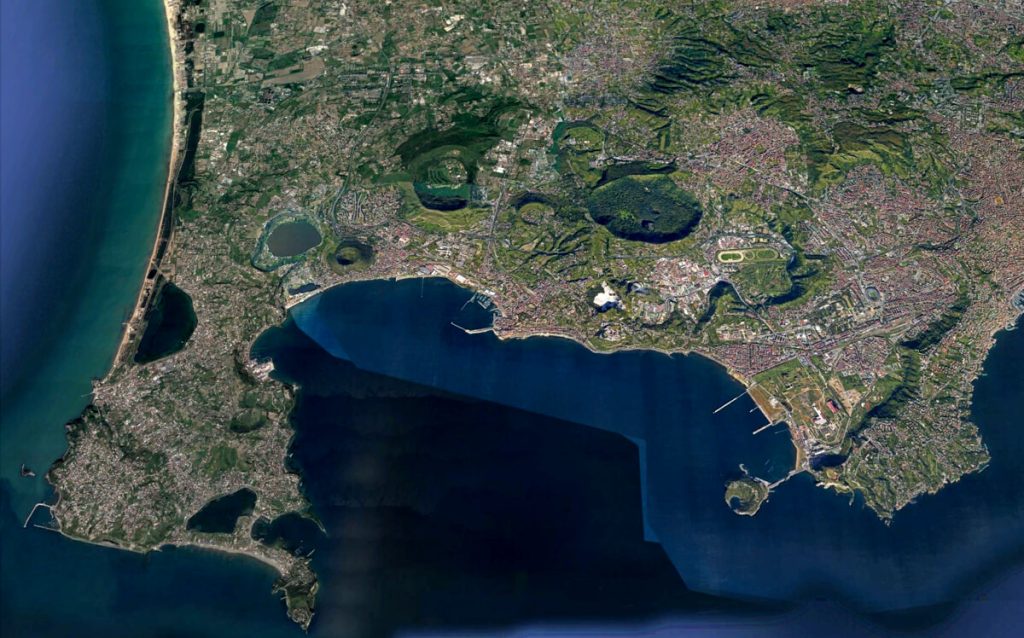
What we simulate
Tha Gales code allows the simulation of magma motion in underground reservoirs and the coupled rocks deformations.
Shape of the magmatic system can be arbitrary, so as the rocks topography and elastic coefficients. Whatever magma composition, both in oxides components and volatiles content can be accounted for. Volatiles partition is computed with a non-ideal solubility law (Papale et al., 2002). Physical properties are obtained through realistic density and viscosity models.
The mixing of magma is investigated spanning wide intervals of density differences and viscosities, that is, considering variable gravity and drag forces contributions acting in the system. Cases of forced injection, typical of overpressurized rising dikes, are also considered.
Fluid pressure applied at the walls of the underground system are the force sources for the computation of rocks deformations. Elastostatic, viscoelastic and viscoplastic rheologies are available in the Gales code.
Case studies
Main applications have been done for the volcanic systems at Campi Flegrei and Etna.


Proudly powered by WordPress
